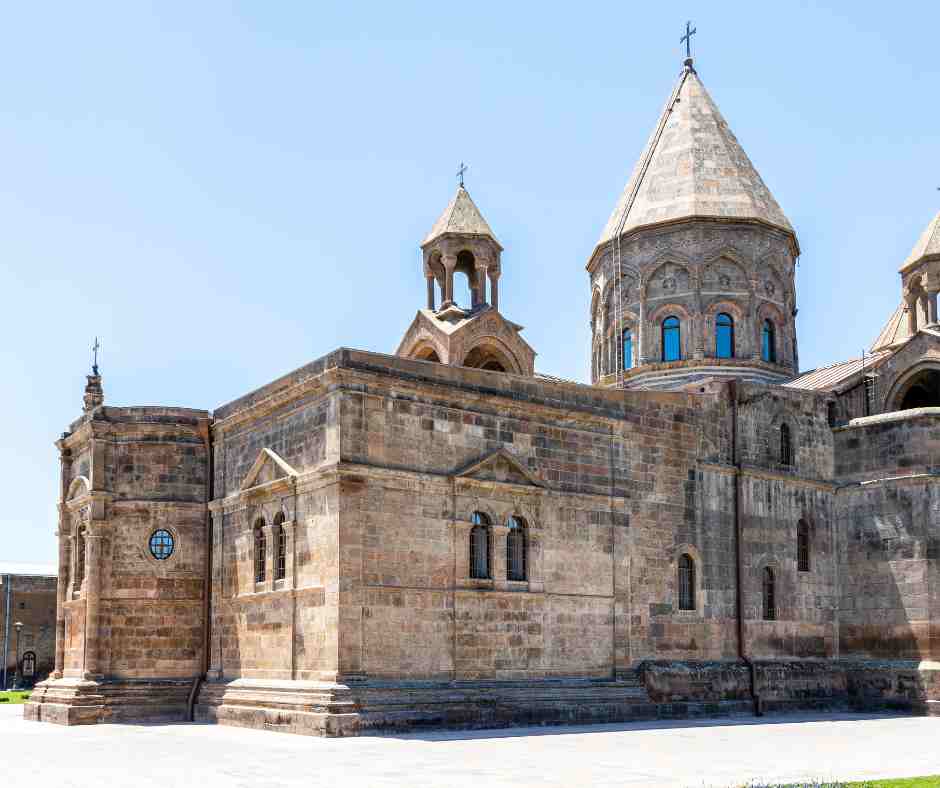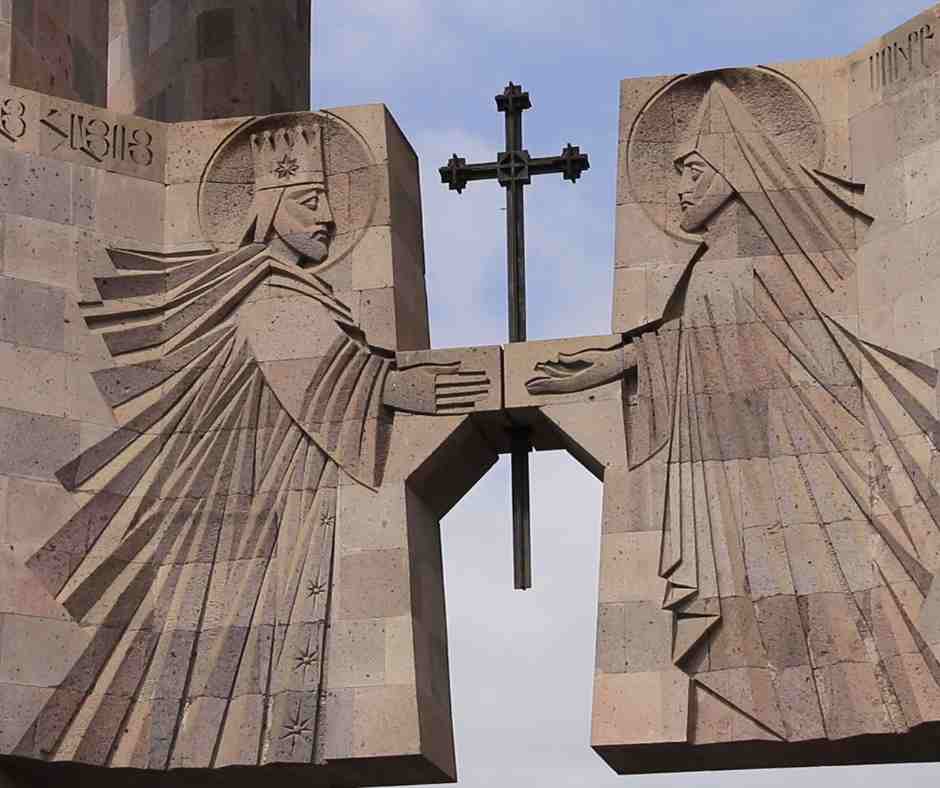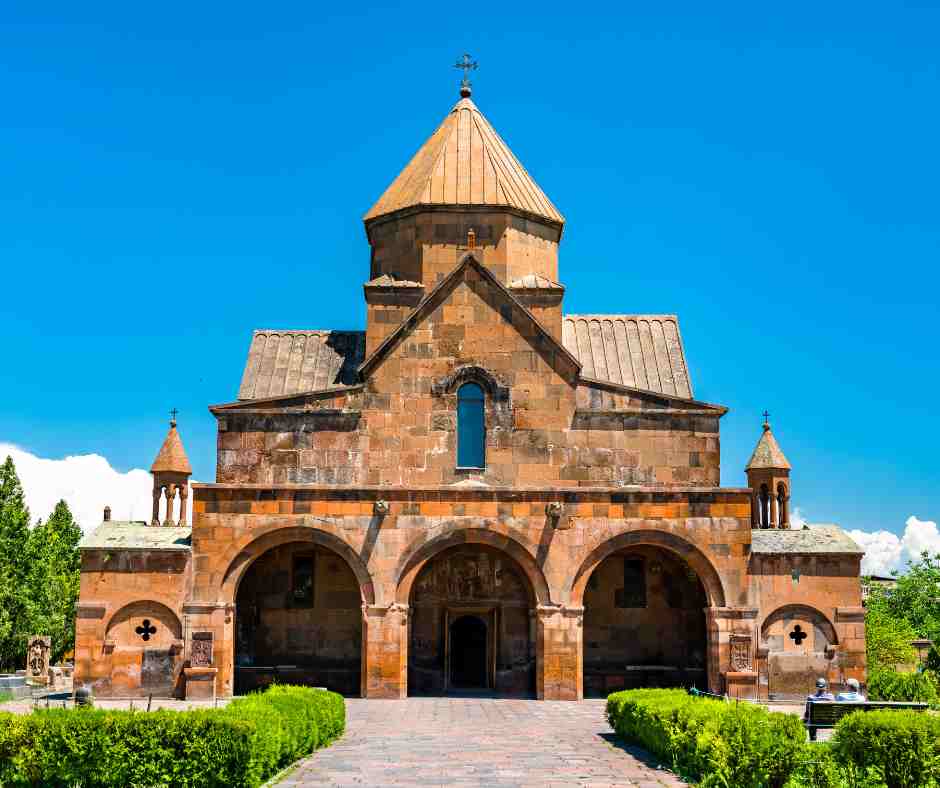
Etchmiadzin Cathedral is one of the oldest churches in the world and a must-see for any traveler visiting Armenia. Located in the city of Etchmiadzin, it is the spiritual center of the Armenian Apostolic Church and home to the Catholicos, the church’s highest authority.
The cathedral holds deep religious and historical significance, making it a highlight for tourists. After recent reopening and reconsecration, it now offers visitors a chance to experience its renewed beauty.
Our blog will uncover the history of this UNESCO World Heritage site and its cultural significance.
Cathedral Re-Consecrated After 12 Years of Renovation

The reopening of the Holy Etchmiadzin Cathedral is a momentous event for Armenia and its people. After nearly 12 years of major renovation, the Cathedral has been reconsecrated and opened to the public on September 29, 2024.
The reopening took place on the Feast of the Holy Cross of Varak, making the occasion even more important.
The reconsecration ceremony took place on September 27, led by His Holiness Karekin II, Catholicos of All Armenians. The sacred throne of the cathedral was blessed with newly consecrated chrism. On September 29, Catholicos delivered a special liturgy, marking the first service in the beautifully restored cathedral. High-ranking officials, including the President and Prime Minister of Armenia, along with religious leaders and pilgrims, attended this historic event.
In his address, Catholicos Karekin II emphasized the importance of unity and hope. The Patriarch also honored the craftsmen, architects, and artists who worked tirelessly to restore the cathedral to its former glory.
The first prayer offered in the reconsecrated cathedral was for peace in Armenia and the world. The Catholicos called for support for displaced Armenians and for unity among the people.
With the reopening of this sacred site, Holy Etchmiadzin continues to stand as a symbol of faith, history, and hope for the future. Visitors now have a chance to witness this extraordinary place, which remains a cornerstone of Armenian culture and religion.
History of Etchmiadzin Cathedral

Etchmiadzin Cathedral is not only one of the oldest Christian churches in the world but also a key symbol of Armenia’s spiritual heritage. Built between 301 and 303 AD, it was founded by Gregory the Illuminator and King Trdat III (Tiridates) after Armenia became the first country to adopt Christianity as a state religion. The cathedral stands on what was once a pagan temple, signifying the country’s conversion to Christianity.
Throughout its history, it has undergone several reconstructions. In 483, it was rebuilt after being damaged in a Persian invasion. Originally constructed from wood, the cathedral was later transformed into a stone structure with a cruciform layout and central dome. Over the centuries, additions such as belfries, altars, and frescoes have contributed to its unique architecture.
The interior is equally impressive. The cathedral’s walls feature intricate frescoes and carvings, some dating back to the 5th century. Famous Armenian artists have contributed to its decoration over the years. In the 18th century, artisans added stunning floral ornaments and biblical scenes that still captivate visitors today.
Etchmiadzin has always been the heart of the Armenian Apostolic Church. Today, it remains the headquarters of the Catholicos of All Armenians. In 2001, the Armenian Apostolic Church returned the relics of St. Gregory the Illuminator, the first Armenian Catholicos.
Since 2000, Etchmiadzin Cathedral has been listed among UNESCO World Heritage sites.
Other Churches of Etchmiadzin

There are other UNESCO churches in Etchmiadzin that are a must-see for anyone ready to dive into Armenia’s history. They’re not just beautiful; they tell incredible stories.
Close by the Cathedral, you’ll find three other famous churches: St. Hripsime, St. Gayane, and St. Shoghakat. The story behind the three famous churches in Etchmiadzin is truly fascinating. It centers on Hripsime, a beautiful Christian nun from Rome. The Roman Emperor Diocletian wanted to marry her, but Hripsime fled with Abbess Gayane and other nuns to Armenia. When they arrived, King Trdat III, who was still a pagan at the time, fell in love with Hripsime as well. However, when Hripsime rejected him, the king ordered the execution of all the nuns.
Each has stunning architecture and a unique atmosphere. St. Gayane Church, built in 630 AD, is famous for its charming garden filled with apricot trees. It’s the perfect spot to reflect in the peaceful atmosphere. St. Shoghakat Church was built where a ray of light fell upon Christian martyrs. Meanwhile, St. Hripsime church contains two unique engraved inscriptions of Catholicos Komitas.
